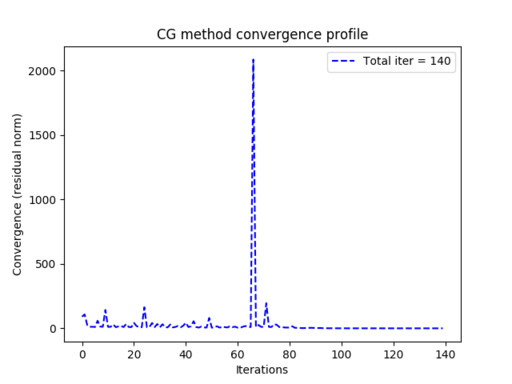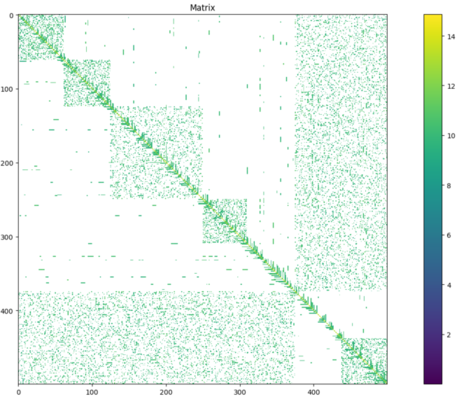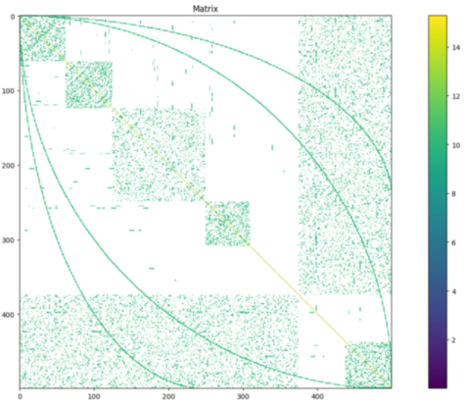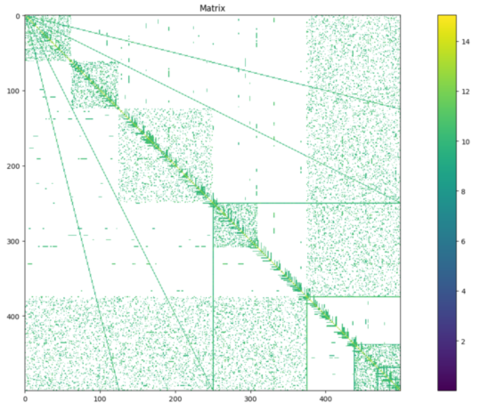Implementation of Conjugate Gradient method for solving systems of linear equation using Python, C and Nvidia CUDA. Currently only Python implementation is available - it includes Conjugate Gradient Method and Preconditioned Conjugate Gradient with Jacobi pre-conditioner (hopefully others will be added as well).
Road-map:
- [X] Python implementation
- [X] Create test matrices generator
- [X] Implement pure CG
- [ ] Implement PCG
- [X] Jacobi preconditioner
- [ ] SSOR preconditioner
- [ ] Incomplete Cholesky factorization preconditioner
- [ ] C implementation
- [ ] Implement pure CG
- [X] Implementation using BLAS library (Intel MKL*)
- [ ] Custom BLAS implementation using OpenMP
- [ ] Implement PCG
- [ ] Jacobi preconditioner
- [X] Implementation using BLAS library (Intel MKL*)
- [ ] Custom BLAS implementation using OpenMP
- [ ] CUDA implementation
- [ ] Implement pure CG
- [ ] Reference implementation using CUBLAS
- [ ] Custom kernels implementation
- [ ] Implement PCG
- [ ] Jacobi preconditioner
- [ ] Reference implementation using CUBLAS
- [ ] Custom kernels implementation
* MKL can be obtained free of charge: https://software.intel.com/en-us/mkl
$ git clone https://github.com/stovorov/ConjugateGradients $ cd ConjugateGradients
$ source run_me.sh (sets PYTHONPATH) $ cd scripts $ make venv $ source venv/bin/activate $ make test
from random import uniform
from scripts.ConjugateGradients.test_matrices import TestMatrices
from scripts.ConjugateGradients.utils import get_solver
import numpy as np
matrix_size = 100
# patterns are: quadratic, rectangular, arrow, noise, curve
# pattern='qrana' means that testing matrix will be composition of all mentioned patterns
a_matrix = TestMatrices.get_random_test_matrix(matrix_size)
x_vec = np.vstack([1 for x in range(matrix_size)])
b_vec = np.vstack([uniform(0, 1) for x in range(matrix_size)])
CGSolver = get_solver('CG') # pylint: disable=invalid-name; get_solver returns Class
PCGJacobiSolver = get_solver('PCG') # pylint: disable=invalid-name; get_solver returns Class
cg_solver = CGSolver(a_matrix, b_vec, x_vec)
cg_solver.solve()
cg_solver.show_convergence_profile()
pcg_solver = PCGJacobiSolver(a_matrix, b_vec, x_vec)
pcg_solver.solve()
CGSolver.compare_convergence_profiles(cg_solver, pcg_solver)You can view convergence profile using solver's show_convergence_profile method:
You can compare convergence profiles of difference solvers using compare_convergence_profiles method:
Different testing matrices can be generated using TestMatrix class, for more information please refer methods descriptions.
Matrices can be viewed using view_matrix function, which can be found in utils.py. Below matrices are symmetric
and positively defined.
Examples can be found in scripts/ConjugateGradients/demo.py
Required Python 3.5+
Before compiling code, make sure you have installed:
1. Intel MKL library 2. Nvidia CUDA with NVCC compiler
Intel MKL library is used for BLAS operations. Implementation was tested on version 2017 though older should work as well.
By default MKL will be installed in directory /opt/intel/mkl/. Before compiling make sure prepare_env.sh has proper
paths to MKL and CUDA libraries.
In Makefile set accordingly:
1. MKLROOT 2. NVCC 3. CUDALIBPATH
By default MKL will be compiled as a static library. CUDA is linked dynamically.
LDFLAGS are used to set dependencies for MKL, please refer to MKL link line advisor to be sure to have it set properly:
https://software.intel.com/en-us/articles/intel-mkl-link-line-advisor
CUDAFLAGS are responsible for setting CUDA libraries.
GCC is used for compiling .c files, NVCC is used for .cu files. Whole project is linked by GCC.
To compile:
$ source prepare_env.sh $ make
Use make clean command to delete compiled build.
Running single core CPU MKL implementation:
./ConjugateGradient -i input_matrix.txt
Running multiple core CPU MKL implementation:
./ConjugateGradient -i input_matrix.txt -mt 4
Running GPU implementation (single device only available):
./ConjugateGradient -i input_matrix.txt --gpu
If there are no CUDA devices, CPU implementation will be launched.
input_matrix.txt is expected to be CSR formatted matrix, various examples can be generated by Python scripts.
A bit about Conjugate Gradients and when it actually works (collection of information found over internet):
CG will work when is applied on symmetrical and positively defined matrix.
CG is equivalent to applying the Lanczos algorithm on the given matrix with the starting vector given by the (normalized)
residual of the initial approximation.
source: https://math.stackexchange.com/questions/882713/application-of-conjugate-gradient-method-to-non-symmetric-matrices
General overview and derivation is described on Wiki: https://en.wikipedia.org/wiki/Derivation_of_the_conjugate_gradient_method
Though this description has a lot of shortcuts and will probably leave you with a more questions then before reading it...
A good description can be found in Painless Conjugate Gradient:
https://www.cs.cmu.edu/~quake-papers/painless-conjugate-gradient.pdf A bit complex work but worth reading (but requires a lot of focus...at least from me...).
A lot about preconditioning could be found here:
http://netlib.org/linalg/html_templates/node51.html
haven't read everything but may explain a lot (still, will probably leave you with a lot of questions...).




